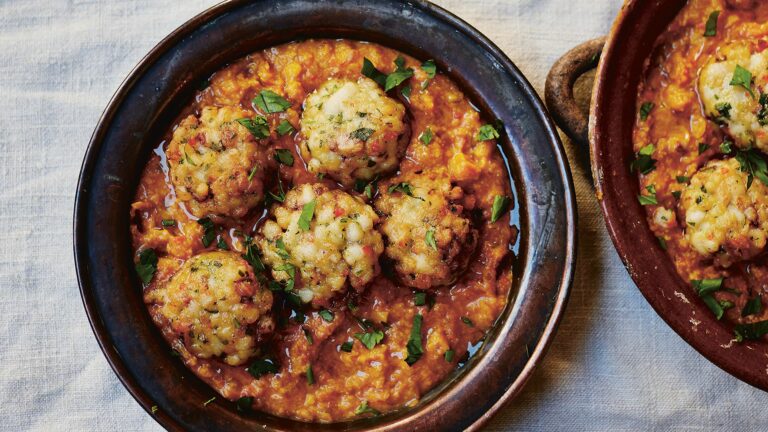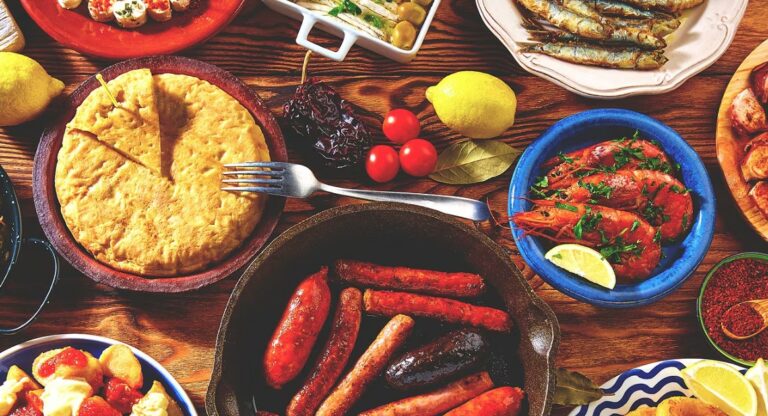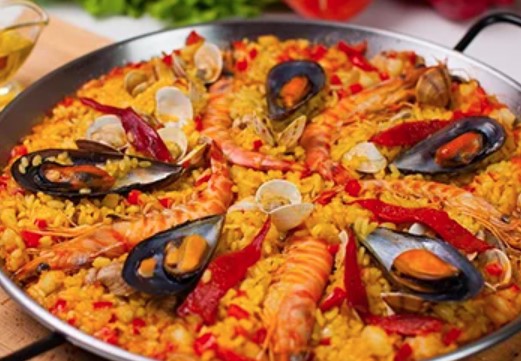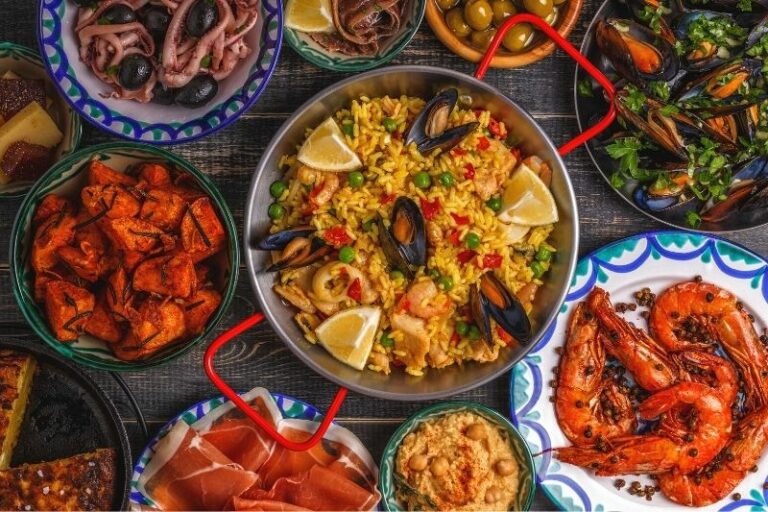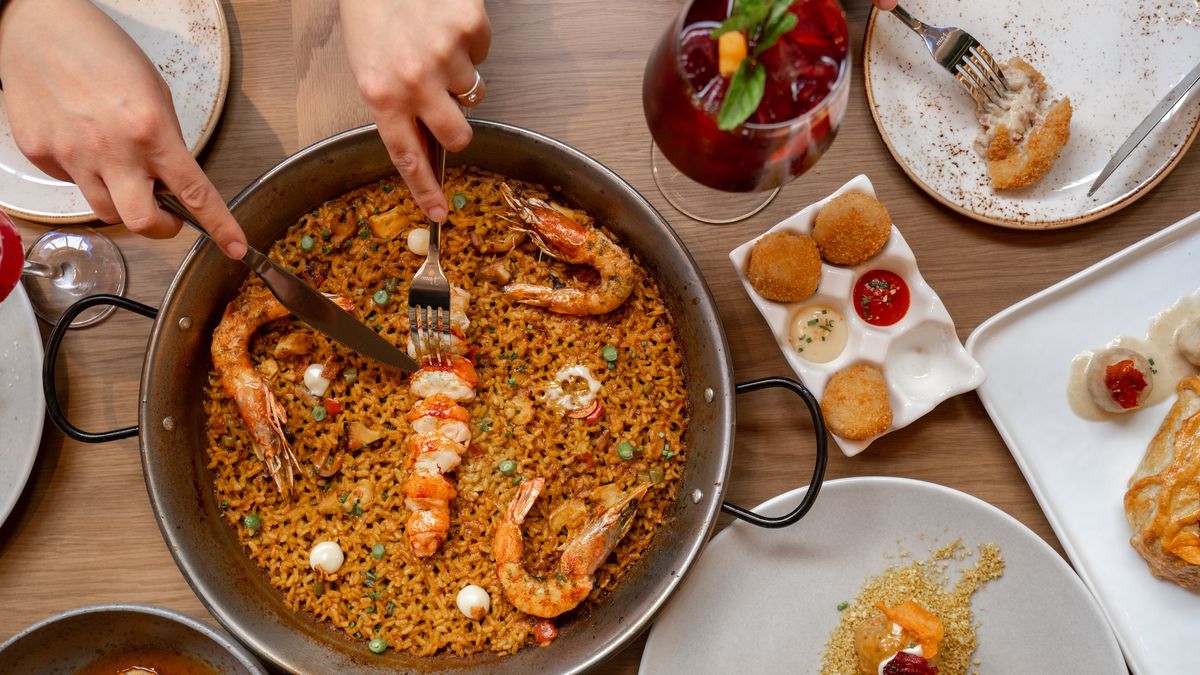Introduction: Street Food in Spain
Spain is a country that is famous for its delicious cuisine, and street food is no exception. From fresh seafood to savory tapas, there is a wide variety of street food options available in Spain that are sure to satisfy any palate. Whether you are looking for a quick snack on the go or a full meal, Spain’s street food scene has something for everyone.
In this article, we will explore some of the best places to find street food in Spain. From the bustling streets of Madrid to the vibrant markets of Valencia, we will take a culinary tour of this beautiful country and discover some of the most delicious and unique street food experiences it has to offer.
1. Madrid: Tasty Treats in the Capital
Madrid is a vibrant city that is known for its lively atmosphere and rich culinary scene. The capital of Spain is the perfect place to start your street food adventure. One of the most popular street food items in Madrid is the bocadillo de calamares, a fried squid sandwich that is served on a crusty roll with a squeeze of lemon. Another must-try street food in Madrid is the churro, a sweet fried dough that is sprinkled with sugar and served with a side of thick hot chocolate for dipping.
If you are in Madrid during the summer months, be sure to try the refreshing gazpacho, a chilled soup made with tomatoes, cucumbers, peppers, onions, and garlic. For a more substantial meal, head to the San Miguel Market, where you can sample a wide variety of street food from different regions of Spain, including pintxos, croquetas, and jamón ibérico.
2. Barcelona: A Foodie’s Paradise
Barcelona is a city that is known for its vibrant food scene, and its street food offerings are no exception. One of the most popular street foods in Barcelona is the pa amb tomàquet, a simple dish made with bread, tomato, olive oil, and salt. Another must-try street food in Barcelona is the bomba, a fried potato ball filled with meat and served with a spicy sauce.
If you have a sweet tooth, be sure to try the churros con chocolate, a popular dessert that is similar to the churros in Madrid. For a more substantial meal, head to the Boqueria Market, where you can sample a wide variety of street food from different regions of Spain, including seafood paella, fried fish, and grilled meat.
3. Valencia: Paella and Beyond
Valencia is a city that is known for its delicious paella, a rice dish that is flavored with saffron and cooked with a variety of meats and vegetables. This famous dish can be found at many of the street food stalls in Valencia, but be sure to try it at a traditional restaurant for the full experience.
Another must-try street food in Valencia is the horchata, a sweet drink made with tiger nuts that is served cold. For a more savory snack, try the empanadilla, a small pastry filled with meat, vegetables, or cheese.
4. Seville: Tapas and More
Seville is a city that is known for its lively social scene and delicious tapas. Tapas are small plates of food that are meant to be shared, making them the perfect street food for a group of friends. Some of the most popular tapas in Seville include patatas bravas, fried potatoes with a spicy sauce, and tortilla de camarones, a small omelet filled with shrimp.
If you are in Seville during the summer months, be sure to try the refreshing salmorejo, a chilled soup made with tomatoes, bread, and olive oil. For a more substantial meal, head to the Triana Market, where you can sample a wide variety of street food from different regions of Spain, including acorn-fed ham, cheese, and olives.
5. San Sebastian: Michelin Star Street Food
San Sebastian is a city that is known for its high-end cuisine, but it also has a thriving street food scene. One of the most unique street food experiences in San Sebastian is the pintxos crawl, where you can hop from bar to bar sampling small plates of food, including grilled octopus, foie gras, and smoked salmon.
For a more substantial meal, be sure to try the txuleta, a thick steak that is cooked over an open flame and served with a side of peppers and onions. And for dessert, don’t miss the Basque cheesecake, a creamy dessert that is slightly burnt on top for a unique flavor.
Conclusion: Exploring the Best Street Food in Spain
Spain’s street food scene is a feast for the senses, with a wide variety of flavors and textures to explore. From Madrid to San Sebastian, there are endless opportunities to sample unique and delicious street foods that are sure to satisfy any craving. So grab a few friends and hit the streets to discover the best street food in Spain.


